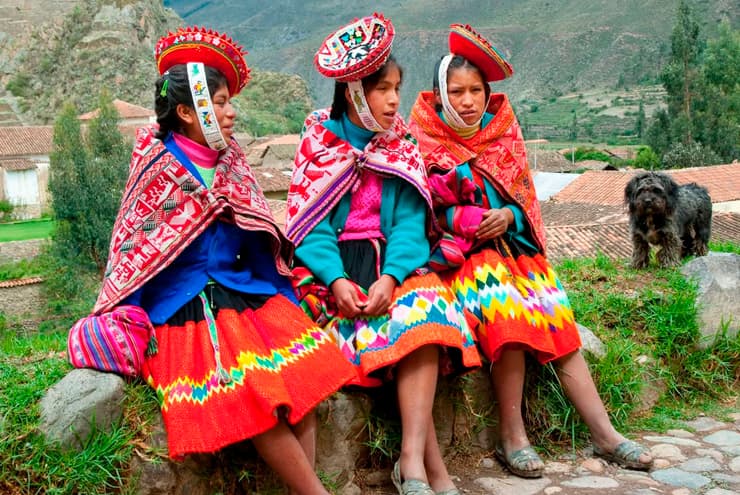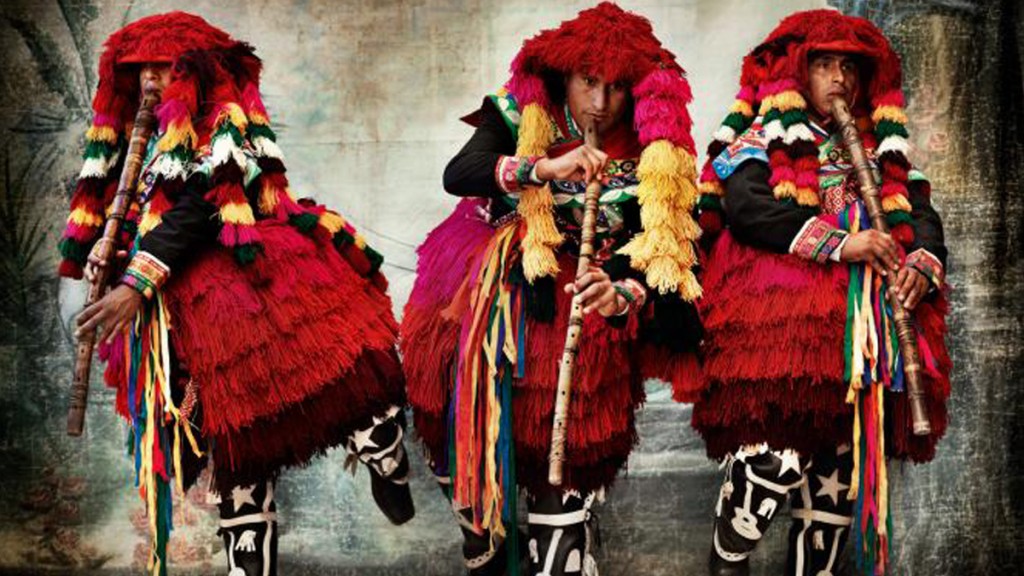Quechua (Kech Qhichwa runa, Spanish Quechua) is an Indian people living in the western part of South America, is the heir to the cultural traditions of Tawantinsuyu (Kech Tawantin Suyu, Tawantinsuyu) – the ancient Inca empire.
By the time of the conquest by the Spaniards, it was the most powerful of the indigenous peoples inhabiting the South American continent. Archaeological evidence indicates that the Quechua culture was then one step higher than the cultures of the Aztecs and Maya in Mexico.
Religious affiliation of believers: overwhelmingly Catholics.
The Indians speak the Quechua language of the same name, which is the official language in some South American countries. But many modern Quechuas (especially in central Peru and Ecuador) speak Spanish.

Religion
The Spanish conquerors converted the Quechua Indians to Catholicism, but could not break their militant spirit. Today, many Quechua are ardent Catholics, but this does not prevent them from keeping a piece of their own history in the depths of their souls.
Until now, along with Christianity, pagan beliefs and shamanism are found in the tribes. During parades in major cities, pagan banners can be seen next to Catholic images.
Among the traditional rituals, the holiday of cleaning irrigation canals is of the greatest importance. The veneration of mountain peaks, Pachamama (Quechua Pachamama; Goddess of earth and fertility, Mother Earth), sacrifices during field work and building a house, etc., are preserved.
Traditional activities
Unfortunately, today some of the ancient farming technologies have been lost, however, the Indians continue to do what they have always done.
The traditional occupations of Quechua are: agriculture, cattle breeding, folk crafts.
The most important place in their economy is occupied by terraced irrigated agriculture, carried out with the help of “chakitakli” (Spanish: Chakitakli; spade with a transverse protrusion for the foot), in the valleys a primitive plow is still used.
In settlements located in the mountains, the Indians grow beans, potatoes and other tuber crops, as well as cereals (millet, quinoa, canihua); corn, barley, and wheat are grown in the valleys.
Cattle breeding in the mountains is of great importance; Quechua’s favorite animals are llamas and alpacas, well adapted to the harsh high-mountain climate.
Among the traditional crafts of Quechua, manual production of fabrics is developed: in the mountains – from wool, in the valleys – from cotton. Wool is spun by men, women and children, but is usually woven by men on primitive looms.
The following crafts are very developed: dressing of felt hats; weaving panama hats and all kinds of cane products; production of stucco ceramics and decorations from natural materials; production of calabash, gold and silver jewelry; bone and wood carving.
Life and traditions
Quechua live both in the valleys and in the mountains, moreover, the settlements in the valleys are cumulus, in the mountains they are scattered, far from each other. The dwellings of the Indians are adobe, rectangular, with a gable roof, with one large living room and several storage rooms.
Some members of the community work near their villages, cultivating the land, others work in the mines.
Like many centuries ago, the Indians make national musical instruments from animal shells and play them excellently.
And what amazing dishes Quechua can cook! Even a simple potato cooked on a mountain slope over an open fire acquires a special taste. The national cuisine of the Indians includes many dishes from the meat of domestic guinea pigs, which they breed specifically for cooking.
The Indians are friendly to tourists, by the way, many of them are engaged in the tourism business: they organize excursions, make and sell original souvenirs made of leather, wood, stone and bone.

Special mentality
The social organization of Quechua is based on the Aylyu community (Kech. Ayllu), also called the Indian community (Kech. Comunidad Indígena) or the peasant community (Kech. Comunidad Campesina). Ailyu members are united by blood relationship, common territory, communal distribution of the fruits of Mother Earth, as well as the cult of veneration of a common ancestor – Wak’a. Today, there are several tens of thousands of Quechua communities, and their number is constantly increasing.
In the life of every Indian, the community occupies an important place. Life for the benefit of the tribe has been cultivated among the Quechua for many centuries. Mutual assistance is a quality that is especially appreciated by the Indians.
Quechua consciously live in their own separate world, managing to maintain their own individuality even in megacities. It is known that representatives of this proud people never ask for help.
Clothing
Quechua Indians can be found in all major cities of Peru, Bolivia and Ecuador.
They always stand out among the local population with their colorful traditional attire, handmade in accordance with ancient technologies.
Men wear trousers just below the knee and cropped jackets made of rawhide or suede. A colorful homespun poncho with a traditional pattern is often thrown over the top.
Women dress up in several brightly colored skirts and a woolen shawl, usually pinned off at the chest with a large brooch. Traditional jewelry is made of silver, stone, bone, shells.
Perhaps the main element that distinguishes K. from other Indian tribes are felt hats, which are worn by everyone – both women and men. Men prefer wide-brimmed hats with a shallow crown, under which, in cold windy weather, a knitted woolen helmet is put on – chullo (ketch. Chullo).
Women decorate their hats with decorations made of bone, stone, shells, wood, and even fresh flowers.
In their settlements, the Indians most often go barefoot, and in the cities they wear light leather sandals.
